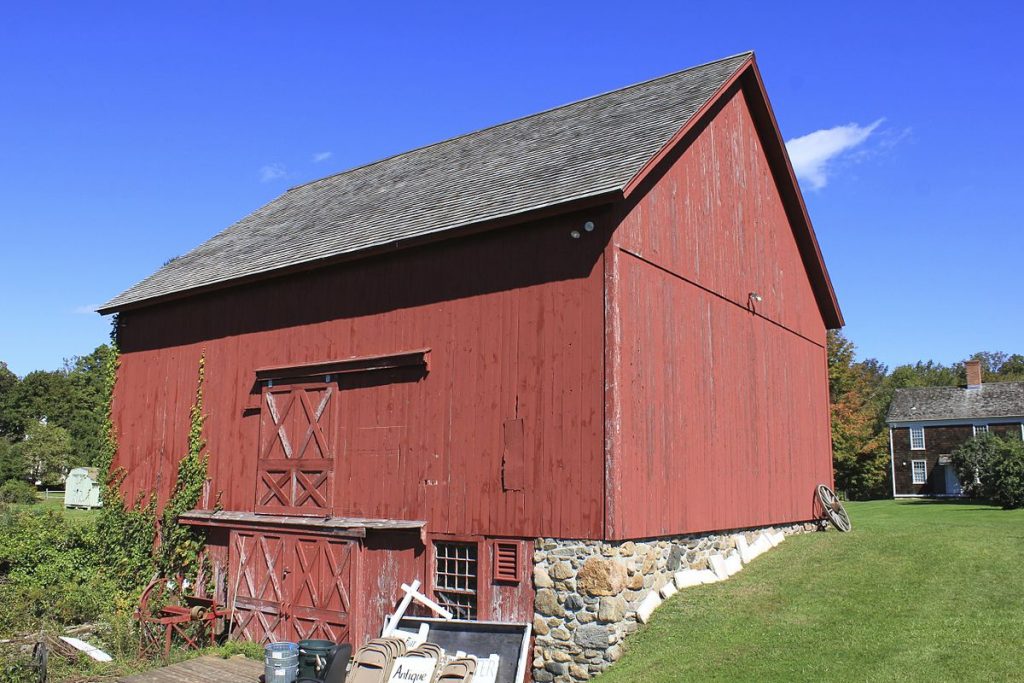Why Barns are Red

Close your eyes and picture a farm, and you’ll probably imagine cows, pigs, fields of various things, and hopefully, a barn. And that barn is probably red. Toss the word “barn” into Google Image Search and you’ll see that, quite often — not always, but easily a majority of the time — these farm structures are painted that color.
Why?
To start, let’s talk about why we paint barns, houses, and other wooden structures in the first place. Sure, doing so is aesthetically pleasing, but so are a lot of things which we decline to do because it’s expensive. Sure, raw wood may not look as nice, but why not forgo a paint job and save the money?
The answer: because it will cost you in the long run. As Home Advisor notes, painting your house is a great way to protect it from the elements — paint “serves as one of your home’s primary lines of defense against weather, insects and other damage.” And, specifically, there’s the problem with moisture. When it rains or when it’s humid outside, untreated wood — or in this case, unpainted wood — is going to warp, get moldy, and otherwise become damaged and potentially harmful to the people and animals inside. Paint helps stop that from happening. So, that’s why farmers paint their barns.
But why red? It’s because barn painting predates regularly commercially available paint.
The history of paint is long and complicated, but the stuff we buy in cans today has only been around since the late 1800s when Sherwin-Williams began selling ready-to-use paint. Before that, you basically had to make your own. The Farmer’s Almanac explains:
Many years ago, choices for paints, sealers and other building materials did not exist. Farmers had to be resourceful in finding or making a paint that would protect and seal the wood on their barns. Hundreds of years ago, many farmers would seal their barns with linseed oil, which is an orange-colored oil derived from the seeds of the flax plant.
But the linseed oil wasn’t enough to protect the barn long-term. That required something else: rust, or chemically speaking, ferric oxide. Somewhere along the way, a farmer realized that rust kills off mold and fungi, so he added some rust to the linseed oil concoction. Now, his sealant was more than just a shield against the elements — it was also one which acted as a sword against some of the more pernicious issues a barn wall could face. It was cheap, it was easy, and it worked.
Oh, and the ferric oxide — which looks like this — turned the linseed oil mix red.
The value of rust-infused oil spread from one farmer to the next, and soon there after, red barns were everywhere. By the time that commercially-available paints were common, the “fact” that barns should be red was seared into our collective consciousness. Farmers continued to paint their barns red, even if they weren’t using ferric oxide any longer, guided by tradition as well as science. And that’s why barns are still often painted red today.
Bonus fact: The Eiffel Tower isn’t red (although it was once reddish-orange). In fact, it isn’t any one color — it is many different (albeit very similar) ones. The official website explains: the now-bronze color is a gradient, one which is “slightly shaded off towards the top to ensure that the color is perceived to be the same all the way up as it stands against the Paris sky. ”
From the Archives: Proto-TP: Why the Farmer’s Almanac has a hole in it. (Caution: Kind of gross.)
Related: A toy wooden barn, which is of course, red.
